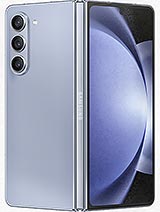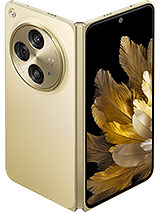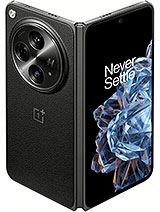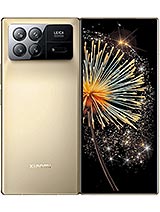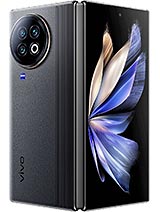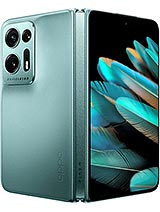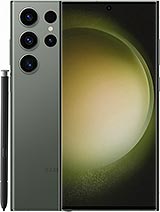Oppo Find N3 review

Display greatness inside and out
The Find N3 is equipped with a couple of top-quality OLED displays. Both the bendy 7.82-inch panel on the inside and the 6.31-inch flat one on the cover offer similar premium features such as 10-bit color depth, dynamic 120Hz refresh rate, 1440Hz PWM dimming and 240Hz touch response, as well as support for HDR10, HDR10+ and Dolby Vision.

The foldable screen has a resolution of 2,440x2,268px, which works out to a density of 426ppi. Its aspect ratio is almost 1:1. This screen is advertised as the more dynamic one capable of going all the way down to 1Hz.
We measured around 600nits on the Find N3's internal display when operating the brightness slider manually, and a little over twice that in adaptive brightness mode with the phone under direct light. Those numbers are on par with the main competitor, the Galaxy Z Fold5, as well as those we got on the OnePlus Open.
The cover display has a resolution of 2,484x1,116px in a 20:9 aspect ratio, and that makes for a marginally higher pixel density of 431ppi. Its minimum refresh rate is 10Hz, according to the official specs.

The brightness results here are ever so slightly lower, but in the same ballpark - just under 600nits manual, a little under 1,200nits auto. As conventional displays go, the boundary has been pushed way beyond that - the Pixel 8 Pro is good for 1,600nits, while the iPhone 15 Pro Max can do almost 1,800nits, but even Oppo's own Find X6 Pro managed about 10% more. Realistically, though, the Find N3's cover display is easily brighter than you'll ever need.
Color accuracy
The Find N3 supports sRGB and DCI-P3 color spaces and switches between them based on app and/or content. Some control is still placed in your hands, and in the display options you can pick between three color modes - Natural, Pro and Vivid.
Natural is the default one with soft and mostly accurate colors, except for the slightly bluish whites and grays. The Pro mode, on the other hand, proved exceptionally accurate for our set of sRGB targets. Finally, Vivid mode offers a wide color gamut and a more colorful output, but it also has a cooler color temperature compared to Natural mode, though you can tweak that with the temperature slider.
Refresh rate
The Find N3 has three Refresh Rate modes - Auto, High, and Standard. According to the description, the Automatic one switches automatically between different modes and can do up to 120Hz. The High always aims for the maximum 120Hz refresh rate when possible, while the Standard one sets a 60Hz ceiling.

In practice, we only saw the Android refresh rate utility show 120Hz and 60Hz readings, and we didn't observe all that much of an adaptive behavior. There were also discrepancies between the Android counter and our own in-house utility. We didn't encounter stutter or any similar odd behavior, so we can speculate that ColorOS is doing what it has to when it has to - it's just not communicating it all that well.
Streaming and HDR
The Find N3 comes with HDR10, HDR10+, and Dolby Vision support. Netflix readily serves Dolby Vision streams, and YouTube also recognizes the compatibility and offers HDR versions of supported content.
Oppo Find N3 battery life
The Find N3's battery has a capacity of 4,805mAh - the same as the OnePlus Open. It's more or less average for the large foldable class, where a few models hover around the 4,800mAh mark, some are at 5,000mAh, and the Galaxy Z Fold5 gets the smallest power pack at 4,400mAh.
The Find N3's Active Use Score is more or less the same as that of the OnePlus Open, though, oddly enough, the two posted slightly different results in web browsing and voice calls. The Find N3 remains a bit more frugal than the Galaxy in our web browsing routine, while the Z Fold5 has the upper hand in gaming. Conventional (non-bendy) smartphones like the Galaxy S23 Ultra and especially the iPhone 15 Pro Max still promise better longevity.
Charging speed
The Find N3 is rated for 67W charging, and that's what it also says on the adapter that came bundled with our review unit. The OnePlus Open also supports up to 67W charging, but some markets get a 67W adapter while in others it's an 80W brick that ships with the phone. With that in mind, we can't be entirely sure if the Find will only ship with this 67W unit, but in any case, the phone won't be charging at anything higher than that.

Oppo's promo materials state the Find N3 will get from empty to 35% in 10 minutes, and indeed it did so in our testing. It also got to 85% in half an hour - ever so slightly quicker than the OP Open. A full charge took 40 minutes, which also turned out marginally better than the OnePlus. The Galaxy Z Fold5 is hardly competitive in this test, but the vivo X Fold 2 managed to beat the Find.
There's no wireless charging on the Find N3 - the original Find N had it, but it got scrapped for the second generation, and it's not returning now. Many large foldables, like the Galaxy Z Fold5, Google Pixel Fold, Huawei Mate X3/X5, and Xiaomi Mix Fold 3, support induction charging.
Speaker test
The Find N3 features a somewhat unusual system with three speakers and support for spatial sound. Two of the speakers are placed at the top (one in each 'half' of the phone), and the third one is at the bottom. The second speaker on the top is actually the earpiece and is weaker compared to the other (symmetrical) two, but it helps for the Atmos and spatial effects.
In a moderately surprising turn of events, the Find N3 behaved rather differently in our speaker test compared to the OnePlus Open. The Oppo earned a 'Very Good' score for loudness - compared to merely 'Average' for the OnePlus - and it's on par with Folds from Samsung, Xiaomi, and vivo.
Additionally, the Find's sound is more open and richer in the upper midrange than what we got out of the Open. It's also got nice bass, though the differences between the large foldables aren't huge in this respect - they're all pretty boomy.
Use the Playback controls to listen to the phone sample recordings (best use headphones). We measure the average loudness of the speakers in LUFS. A lower absolute value means a louder sound. A look at the frequency response chart will tell you how far off the ideal "0db" flat line is the reproduction of the bass, treble, and mid frequencies. You can add more phones to compare how they differ. The scores and ratings are not comparable with our older loudspeaker test. Learn more about how we test here.
Reader comments
- Mann
- 10 May 2024
- wHU
How to rectify folded double screen when opened only show one half screen.
- Darth Caesium
- 29 Apr 2024
- H5x
Just a quick, perhaps slightly dumb question, but since the ultrawide can do macro, does the software allow you to do macro selfies using the cover screen mode? If so, would you guys at GSMArena be willing to try macro selfies with foldables that sup...
- The Impaler
- 25 Dec 2023
- Ibx
You guys mention the pixel fold in this review but still haven't reviewed it. When will that be reviewed?
